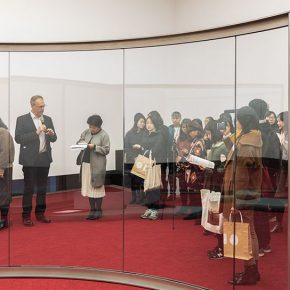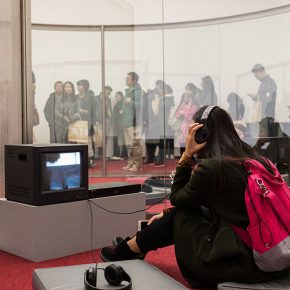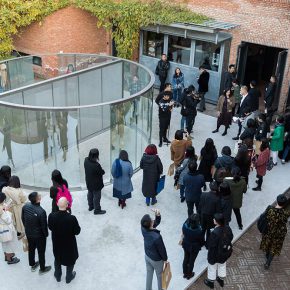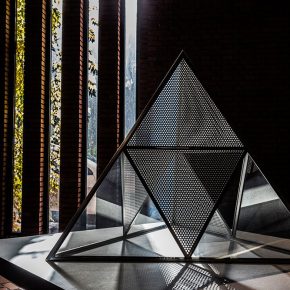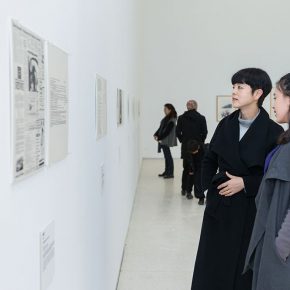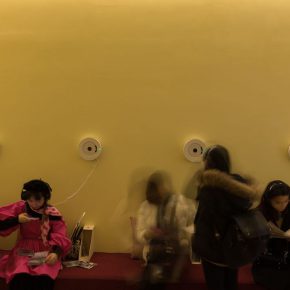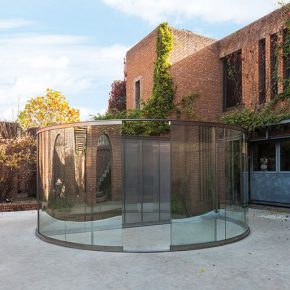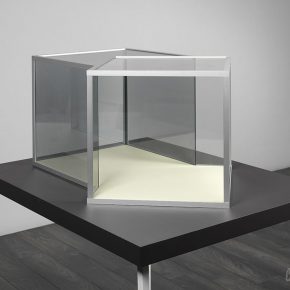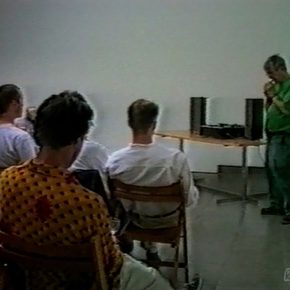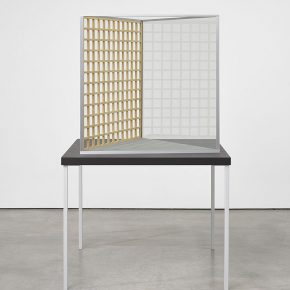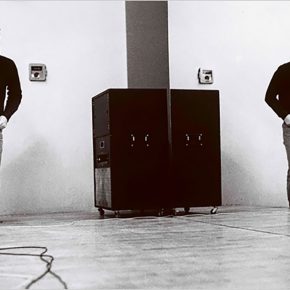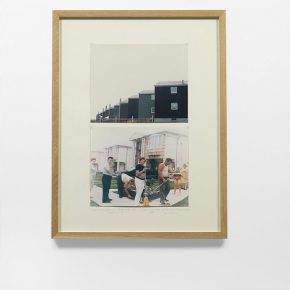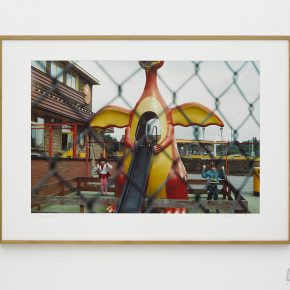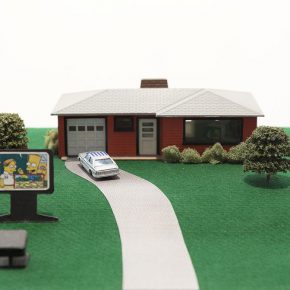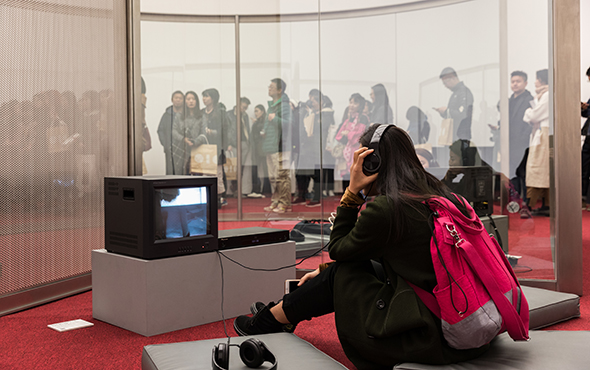
Following the American artist’s first solo show “Andres Serrano: An American Perspective” held on November 4, the Red Brick Art Museum launched Dan Graham’s first solo exhibition – “Dan Graham – Greatest Hits” in China at the Museum on November 7. The exhibition is named after Graham’s “Greatest Hits, On Going”, a music playlist he has been compiling over several years, which is available for visitors in a specially created room. It offers a complete overview of the artist’s history of artistic creation over fifty years with more than 20 pieces.
Dan Graham was born in 1942 and established the John Daniels Gallery in New York when he was 22 years old, following the closure of the gallery in 1965, Graham turned to magazines as the primary venue for his art, and he created a system for publishing the text and photographic pieces between the magazines’ advertisements. In 1965 Graham began shooting color photographs for his series “Homes for America (1966-1967)”: all the photographs taken were of single-family homes, new shopping precincts, truck depots and roadside diners around the American suburbs. This photo series, one of the first artworks as text, was published as a two-page spread in Arts Magazine, which challenged the traditional values, marking Graham’s entry point into conceptual art. These magazines are displayed in China as part of the show. Concerning his magazine work, Graham said, “There was this whole idea in the air of defeating monetary value in the 1960s, so my idea was to put things in magazine pages where they’d be disposable with no value. And that was a hybrid also because the work was a combination of art criticism and essay: magazine page as an artwork.”
As one of the most important contemporary artists in the United States, he was deeply involved in the contemporary art of the United States after the war. His innovation and creativity have always kept him active at the forefront of development of contemporary art, and Graham is an influential figure in conceptual art, video and film installation, performance and site-specific sculpture.
His visionary embrace of performance art is also captured in the exhibition through videos of early performances. Single-channel time-based works, like Lax/Relax (1969 - 1995) and Performer / Audience / Mirror (1975), focus on the ability of art to be both interactive and reflective, incorporating wall – size mirrors, video cameras and audience participation. These historical pieces represent the artist’s pioneering use of video to document perception and illustrate his interest in the semiotics of film.
Graham’s works are very diverse, and his biggest hobby is rock music, as he said, “Music gives me passion.” It presents a work of single-channel video of Rock My Religion (1982-1984), which is a provocative thesis on the relation between religion and rock music in contemporary culture. With the “reeling and rocking” of religious revivals as his point of departure, Graham analyses the emergence of rock music as religion with the teenage consumer in the isolated suburban milieu of the 1950s, locating rock’s sexual and ideological context in the post-World World II America. Don't Trust Anybody over 30 (2004) was originally presented as a live rock and roll puppet show conceived and written by Dan Graham. The play is set in the late ’60s to early ’70s period when the “hippie” tribes moved their “counter culture” of settlements to the bucolic “wilderness” of the countryside. This work highlights the cultural importance of rock music and showcases Graham’s engagement with youth culture, as well as his innovative approach to cross-disciplinary collaboration.
Although he was unable to attend the opening ceremony of the exhibition due to health reason, Graham carefully recorded a video to introduce the works on show and the reason why he selected them for the Chinese audience. For fifty years, Dan Graham has traced the symbiosis between the architectural environment and their inhabitants. The red bricks used in the design of the building not only represent its foundation but were also intended to encompass the history, tradition and tranquility of a Chinese garden. The Red Brick Art Museum presents a newly commissioned “pavilion”, which is engineered out of steel, mirror and glass to create diverse optical effects, bridging the gap between art and architecture, and it also reflects his continuous investigation of the relationship between the architectural environment and their inhabitants. The “Pavilion” series is also Graham’s most famous work.
The exhibition remains on view till February 25, 2018.
Text by Yang Zhonghui, translated by Chen Peihua and edited by Sue/CAFA ART INFO
Photo by the organizer??



